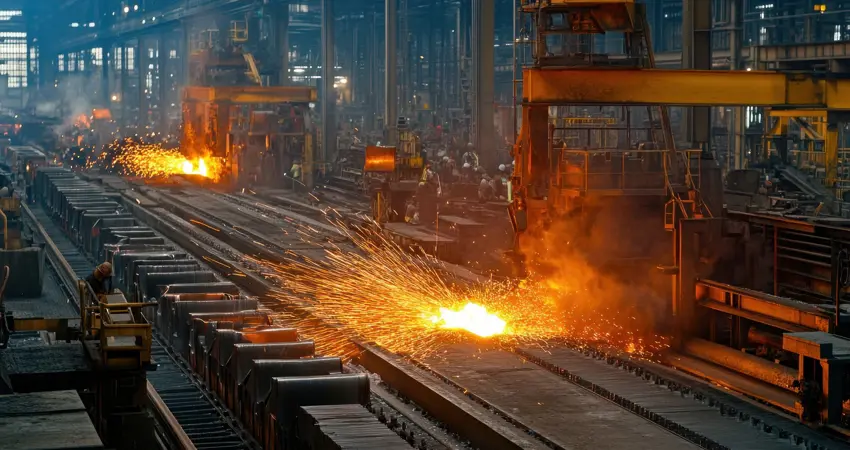24 Jan 2025
Oxford researchers to lead one of 10 hydrogen projects funded to accelerate UK’s net zero transition
The UK Hub for Research Challenges in Hydrogen and Alternative Liquid Fuels awarded a total of £3m to researchers working on the schemes

Stock image: Steel production process at a manufacturing plant
The UK Hub for Research Challenges in Hydrogen and Alternative Liquid Fuels (UK HyRES), based at the University of Bath, is aimed at accelerating the net zero transition by developing hydrogen research. Funding totalling £3million has been awarded to projects at Oxford University and other institutions which ‘address obstacles that stand in the way of greater adoption of hydrogen and low-carbon liquid fuels and seek to better understand ways to efficiently produce and use, and safely store and transport them’.
Professor Tim Mays, who leads UK HyRES, says, “We are delighted to welcome 10 new research projects to UK-HyRES. The projects cover all our Hub themes – hydrogen production, storage and end use and alternative carriers – and join the 14 core projects already underway in the Hub.”
Professor Aidong Yang and Dr Binjian Nie will lead the ‘Ammonia Direct Reduction of Iron Oxides’ project at the University of Oxford. Ammonia as a hydrogen carrier has great potential in decarbonising industrial and energy systems, particularly in the long-distance integration between regions such as Australia and Afria that are rich in renewable energy supply and energy demand centres such as the UK and the EU.
The project aims to establish the potential of ammonia direct reduction (ADR) in steel making, a sector responsible for approximately 8% of global carbon emissions. Recent studies on direct hydrogen direct reduction (HDR) of iron ore, the established technology in the field, have highlighted challenges associated with using ammonia as a hydrogen carrier, particularly during the ‘cracking’ step. The cracking step is the process whereby ammonia is heated to a high temperature to cause it to break down into nitrogen and hydrogen gas. This part of the process is very energy intensive and inefficiencies in hydrogen production can impact the overall effectiveness of the process.
These issues have motivated the exploration of the emerging technology of ammonia direct reduction of iron ore in the shaft furnace, which to date has received very limited attention and has not been implemented at an industrial scale. By exploring ADR, researchers hope to find more efficient alternatives to this step, potentially leading to reduced energy consumption and lower carbon emissions in steelmaking.
The project will carry out systematic experimental testing of the ADR process, based on which a rigorous mathematical model will be developed. This model will help identify and optimize key factors that influence product quality and energy consumption, by running simulations of ADR-based shaft furnace operations at industrially relevant scale and conditions.
By bridging the knowledge gap between ADR and HDR, this research aims to advance the field from initial feasibility studies to detailed engineering assessments, aiding the transition towards more sustainable steelmaking practices.




